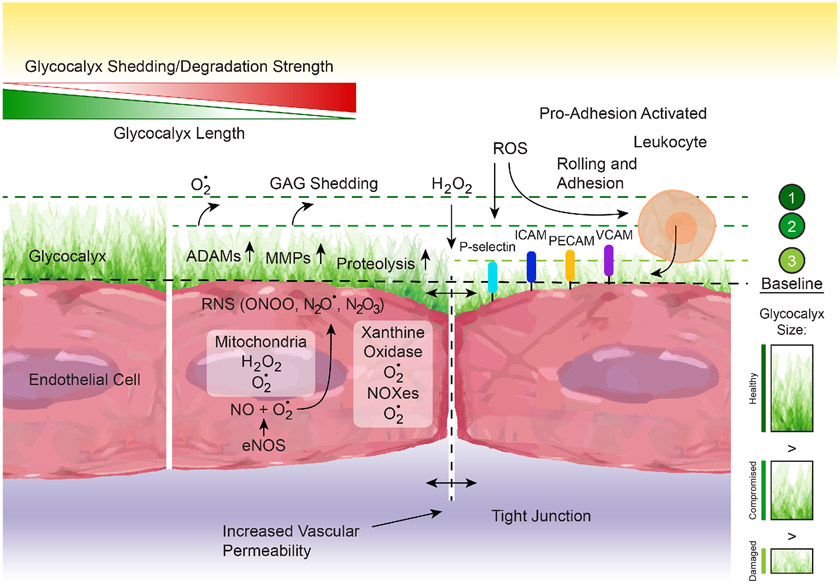Figure 8.
Schematic representation of the mechanisms that promote endothelial glycocalyx degradation. The endothelial glycocalyx undergoes a constant process of synthesis or adsorption and degradation or shedding. Degradation occurs in response to glycosaminoglycans (GAG) oxidation by reactive oxygen species (ROS) such as nitric oxide (NO), superoxide (O•2), and H2O2, as well as by reactive nitrogen species (RNS) such as peroxynitrite (ONOO), N2O• or N2O3. These reactive molecules are produced by multiple cellular components including mitochondria, endothelial NO synthase (eNOS), xanthine oxidase, and the NADPH oxidases (NOXes). Glycocalyx degradation also occurs by proteolysis or shedding mediated by enzymes such as the matrix metalloprotienases (MMPs) and the a disintegrin and metalloproteinases (ADAMs), amongst others. Glycocalyx degradation in turn increases vascular permeability and allows for exposure of proinflammatory receptors (e.g., P-Selectin, ICAM, PE-CAM, V-CAM) that promote leukocyte rolling and adhesion to the vascular endothelium.

